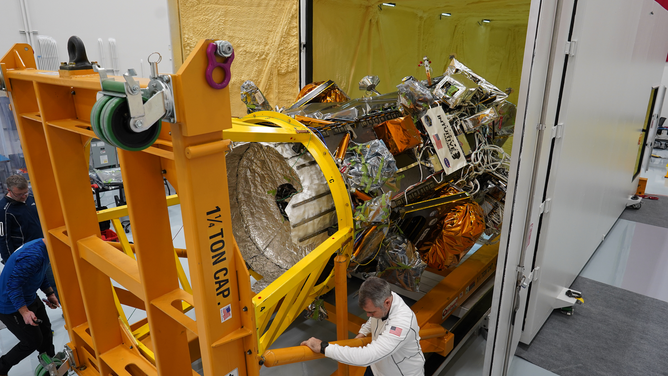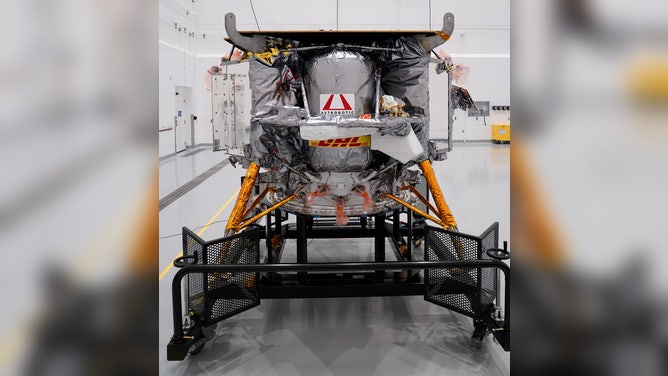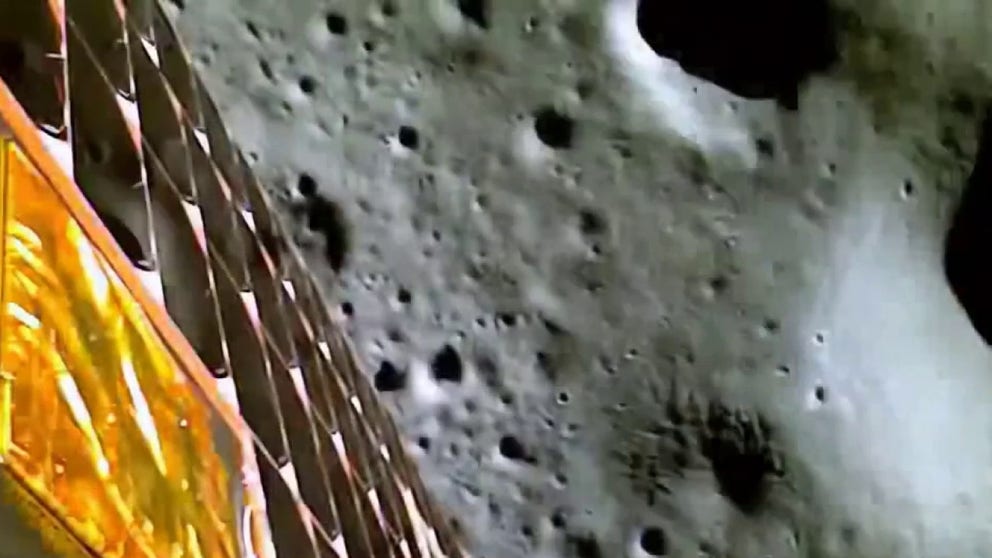Private companies prepare for first American Moon landing in decades
The first two private American Moon missions are set to launch in January and February 2024. NASA science is hitching a ride with American-made lunar landers.
Watch India's spacecraft come down for landing on the Moon's South Pole
2023 FILE VIDEO: A video from the Indian Space Research Organisation's Chandrayaan-3 moon lander as it comes in for a soft landing on the lunar South Pole. (video credit: ISRO)
CAPE CANAVERAL, Fla. – Two Moon landers carrying NASA science are set to launch from Florida in early 2024, setting up either of the robotic missions to possibly be the first of a private company to land on the Moon.
The missions are part of NASA's Commercial Lunar Payload Services (CLPS) program, selected to deliver science ahead of the first Artemis astronaut missions to the lunar south pole in late 2025. More than a dozen American companies were awarded contracts with NASA to carry science and technology to the Moon under CLPS.
After several delays in 2023, the first two private missions are set to launch in January and February 2024.
Pittsburgh space company Astrobotic is targeting the launch of its Peregrine Moon lander no earlier than Jan. 8 with United Launch Alliance. The liftoff will be the first mission for ULA's new Vulcan rocket.
MYSTERIOUS NEVER-BEFORE-SEEN DEEP SPACE RADIO SIGNAL FOUND BEYOND MILKY WAY
Astrobotic CEO John Thornton said in November the company accepts the risk of launching with a new vehicle but was comforted by ULA's "stellar track record of success." Much of the Vulcan is based on ULA's workhorse rocket, the Atlas V, with some new improvements and the addition of engines from Blue Origin.

Astrobotic Peregrine lander integrated with ULA's Vulcan rocket fairing. (Image: ULA)
(ULA)
"The vehicle has a new name, but much of the vehicle is actually the Atlas V. So it's a well-proven vehicle in that sense," Thornton said. "Yes, this one has got some new engines and other pieces to it, but we are very confident on that launch."
Even with the confidence in ULA, Thornton said he will be "on the edge of his seat on that launch."
Peregrine will provide power and communication to more than 20 lunar payloads, including five science missions for NASA and science for universities, government and private customers. The different science objectives are catered to the landing zone, a region of ancient basaltic lava flows.
A launch time for Jan. 8 has not been set for the lunar mission lifting off from Cape Canaveral Space Force Station.

Intuitive Machines Nova-C lander loaded in Houston up for shipment to Florida. (Image: Intuitive Machines)
(FOX Weather)
Houston-based Intuitive Machines will launch its Nova-C lander with SpaceX on the IM-1 mission in February. The mission was slated to launch in January, within a week of Astrobotic's mission, but in late December, Intuitive Machines said the first available launch window is now in mid-February.
"In coordination with SpaceX, the launch of the Company’s IM-1 lunar mission is now targeted for a multi-day launch window that opens no earlier than mid-February 2024. The updated window comes after unfavorable weather conditions resulted in shifts in the SpaceX launch manifest," Intuitive Machines said.
When it does happen, the IM-1 mission will deliver NASA and other customer science payloads to the lunar south pole for a two-week mission. The lander will also carry a piece of art by Jeff Koons that will remain on the Moon.
Intuitive Machines recently revealed the lander will be called Odysseus in reference to a "long and adventurous journey marked by challenges and trials." The name was chosen after an employee vote.
No private company has successfully landed on the Moon, and either of these companies could become the first.
Since the dawn of the space age, just over half of lunar landing attempts have been successful. In August, India became the fourth nation to land a robotic mission on the Moon after the country's first try failed last year.

Astrobotic's Peregrine Moon lander at Astrotech facilities in Florida. (Image: ULA)
(ULA)
"Landing on the moon is a daunting technical challenge, particularly for robotic vehicles," NASA CLPS manager Chris Culbert told reporters in November. "Engines, navigation systems, radios and many other subsystems all have to work together to enable a soft landing. I mean, to do it without human intervention. We witnessed a lot of robotic landing attempts that didn't get all, we didn't get all these systems to work properly, and they ultimately failed."
Culbert said Astrobotic and Intuitive Machines have used "innovated solutions" to manage risks during the missions. However, the space agency leadership accepts that some CLPS missions may fail.
If Astrobotic's mission launches with ULA on Jan. 8, the lander will touch down on Feb. 23.
